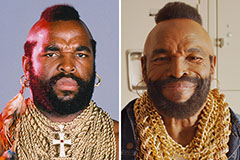In today's fast-paced world, mobile devices have become our constant companions. Users expect compelling and interactive experiences that go beyond basic functionality. Crafting truly immersive mobile journeys requires a thoughtful strategy that considers aspects such as user interface structure, content presentation, and technological capabilities. A well-crafted app seamlessly blends these elements to create a memorable experience that keeps users engaged.
- Visually appealing design elements
- Intuitive navigation
- Personalized content
By incorporating these principles, developers can leverage the full potential of mobile technology to create truly immersive and delightful experiences.
Bridging the Gap Between Idea and App
Bringing a concept to life as a functional application is a journey filled with challenges. Often, the transition from initial spark to a tangible product can be fraught with confusion. Successful app development requires more than just a brilliant thought; it demands a structured process that effectively transforms your vision into reality.
A crucial step in this process is understanding the nuances of app development itself. This involves researching different technologies, pinpointing target audiences, and building user-friendly interfaces that captivate users.
Furthermore, effective communication between developers, designers, and stakeholders is essential to ensure that the final product matches the original vision.
By addressing these obstacles, we can effectively connect the gap between idea and app, turning innovative concepts into powerful, user-centric applications.
Crafting User Needs: The Art of Mobile Development
In the dynamic realm of mobile application development, interpreting user needs stands as a paramount imperative. Developers must transform abstract user desires into tangible features that resonate with target audiences. Through meticulous analysis, developers can uncover the core drivers behind user behavior, establishing the foundation for impactful mobile applications. A deep grasp of user needs allows developers to build intuitive and user-friendly interfaces that improve the overall user experience.
Building Beyond Functionality: Design Thinking for Apps
In the dynamic realm of app development, functionality stands paramount. Yet, to truly captivate users and forge lasting engagement, developers must transcend the threshold of basic utility. This is where design thinking emerges as a potent catalyst for crafting exceptional app experiences. By embracing a user-centric approach, designers can uncover the core needs and desires of their target audience, infusing meaning and value into every facet of the app.
Through iterative prototyping, feedback loops, and a relentless focus on user perspectives, design thinking empowers developers to imagine apps that are not only functional but also deeply compelling.
This human-centered paradigm has the power to redefine the app development landscape, generating innovative solutions that truly enrich users' lives.
Conquering the Mobile Landscape: Trends & Technologies
The mobile realm is in a state of constant flux. With new technologies read more appearing all the time, it can be difficult to keep up. Individuals are demanding ever more advanced mobile experiences, fueling innovation across the spectrum of devices and applications.
One key development is the rise of machine learning. Applications are becoming increasingly intelligent, able to personalize user experiences in real time. Another major shift is the expansion of 5G connectivity, offering faster speeds and lower latency, enabling new capabilities.
Exceeding these headline trends, there are many other advancements shaping the mobile landscape. These include:
* AR and its uses in various fields
* The growing demand of foldable phones
* New power technologies
As the mobile environment continues to evolve, it's crucial for enterprises and programmers to stay aware on the latest trends and technologies.
Building From Prototype to Launch: The Mobile Dev Lifecycle
The mobile development lifecycle is a intriguing journey that takes an idea from initial concept to a polished, operational app in the hands of users. It's a detailed process involving several distinct stages, each crucial for delivering a stellar final product.
First comes the ideation phase, where developers brainstorm the app's purpose, features, and target audience. This stage often involves drafting wireframes and user flow diagrams to establish the app's structure and functionality.
Once the concept is solidified, the development team moves into the prototype phase. Here, they build a basic, interactive version of the app, allowing for early testing. This stage is essential for identifying any issues and making necessary modifications before moving forward.
The next stage involves comprehensive development, where developers craft the app's logic, connect to databases, and implement the desired features. Throughout this phase, rigorous quality assurance is conducted to guarantee the app's reliability and efficiency.
Finally, once the app has been thoroughly tested and refined, it's ready for launch. This involves submitting the app to app stores like Google Play or the Apple App Store, following their respective guidelines and requirements. After launch, developers continue to monitor user feedback, analyze data, and publish updates to improve the app and address any issues that may arise.
 Haley Joel Osment Then & Now!
Haley Joel Osment Then & Now! Mr. T Then & Now!
Mr. T Then & Now! Romeo Miller Then & Now!
Romeo Miller Then & Now! Dawn Wells Then & Now!
Dawn Wells Then & Now! Katey Sagal Then & Now!
Katey Sagal Then & Now!